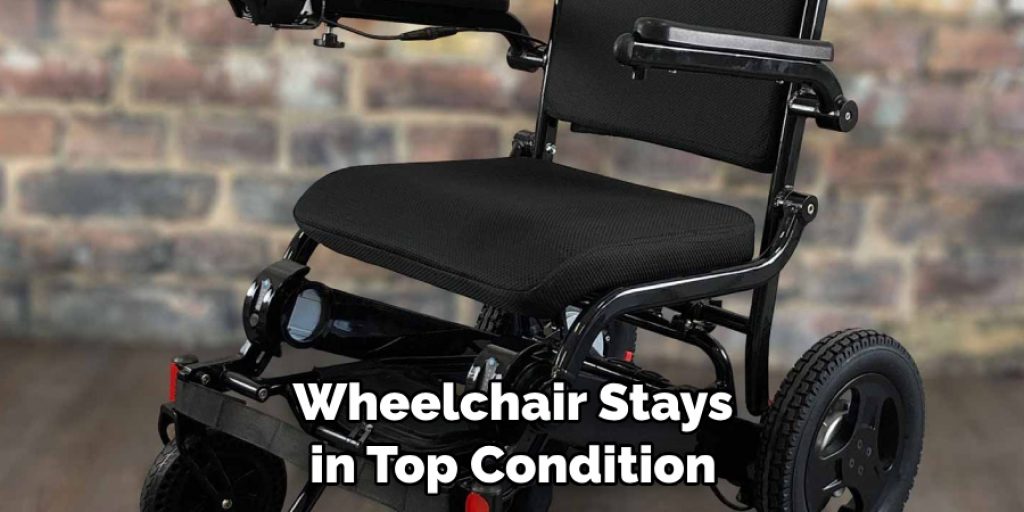How to Clean a Wheelchair
Are you looking for ways to keep your wheelchair clean and functioning at its best? Look no further! In this guide, we will provide you with step-by-step instructions on how to clean a wheelchair.

With so many wheelchairs on the market, figuring out how to clean them correctly can be intimidating. Whether you have just purchased a new wheelchair or have owned one for years, everyone must know how to take care of their devices to maintain optimal performance and hygiene. To ensure your wheelchair is well-maintained and ready for any activity, we’ve compiled this comprehensive guide on cleaning your device efficiently and effectively!
Keep reading to learn more about the simple steps to keeping your chair tip-top shape!
What Will You Need?
Before diving into the cleaning process, let’s take a look at what supplies you will need:
- Water
- Soap or Detergent
- Soft Clothes or Sponges
- Bucket
- Brush with Soft Bristles (optional)
- Towels
Once you have all the necessary supplies, you can start cleaning your wheelchair!
10 Easy Steps on How to Clean a Wheelchair
Step 1: Check the Manufacturer’s Instructions
The first step in maintaining your wheelchair involves thoroughly reviewing the manufacturer’s instructions. These instructions contain specific details and recommendations about the product, including cleaning advice tailored to the particular model.
Following these guidelines will ensure your cleaning does not inadvertently damage any part of the wheelchair. Remember, every wheelchair is unique, so it’s essential to refer to these instructions before you begin cleaning. If you’ve misplaced your manual, most manufacturers provide digital versions online.

Step 2: Disassemble the Wheelchair
The next step involves disassembling your wheelchair as much as possible. Start by removing the cushions and any other detachable parts, such as the footrests and wheels. Be sure to place them in a safe place to avoid misplacing any of the parts.
This will make it easier to clean those hard-to-reach spots and ensure a thorough cleaning of each component. Note that the extent to which your wheelchair can be disassembled will depend on the model, so it’s essential to refer back to the manufacturer’s instructions.
Step 3: Clean the Frame
With the wheelchair disassembled, you can now start cleaning the frame. Mix a solution of warm water and mild detergent in your bucket. Dampen a soft cloth or sponge in the soapy water and gently scrub all parts of the frame. Pay special attention to the corners and crevices where dirt and grime accumulate.
If needed, use a soft bristle brush to scrub away stubborn dirt. Afterward, rinse the frame with clean water and dry it thoroughly with a towel to prevent rusting. Avoid getting water into any electrical components if your wheelchair is motorized.
Step 4: Clean the Wheels
The wheels of your wheelchair can collect a lot of dirt and debris from daily use. To clean the wheels, clean any loose dirt with a dry cloth. Next, take your bucket of warm, soapy water and a brush with soft bristles to scrub the tires thoroughly.
If your wheels have spokes, clean between them as well. Once you’ve removed all the dirt, rinse the wheels with clean water and dry them off completely to prevent rusting. For electric wheelchairs, be careful not to get water into the motor or other electrical components.

Step 5: Clean the Cushions and Upholstery
The cushions and upholstery of the wheelchair can accumulate sweat, dirt, and bacteria, which can lead to bad odors and cause skin irritations if not cleaned regularly. Start by checking the manufacturer’s instructions for any specific cleaning guidelines. If machine washing is allowed, remove the covers and wash them on a gentle cycle with mild detergent.
If not, spot-clean them using a cloth dampened with warm soapy water. Rinse thoroughly and let them air dry completely before reattaching to the wheelchair. Consider using an upholstery cleaner for stubborn stains, but remember to test it on an inconspicuous area first.
Step 6: Clean the Footrests
Footrests are another component of your wheelchair that can accumulate dirt and grime, especially if you frequently use your wheelchair outdoors. To clean the footrests, remove them from the wheelchair if possible.
Use a cloth dampened with warm, soapy water to wipe down the entire surface of the footrests. For stubborn dirt, a soft-bristle brush can be used. After cleaning, rinse the footrests with clean water and dry them thoroughly before reattaching them to the wheelchair.
Step 7: Check and Clean the Brakes
The brakes are a crucial safety feature of your wheelchair that needs regular attention. Firstly, inspect them for any signs of wear or damage. If you notice any issues, it may be time to replace them.
After inspection, clean the brakes by wiping them down with a cloth dampened in your warm, soapy water. Remove any dirt or grime that could interfere with their functioning. Dry the brakes thoroughly after cleaning to prevent rusting. Remember, it’s always a good idea to test the brakes after cleaning to ensure they work correctly before reusing the wheelchair.
Step 8: Reassemble the Wheelchair
Once everything is clean, dry, and ready to go, it’s time to put your wheelchair back together. Start by reattaching the footrests and the wheels, ensuring that they are securely in place.
Next, replace the cushions and any other parts you removed. As you do this, take the opportunity to inspect all the components and ensure they are in good condition. If your wheelchair has any electrical elements, ensure they are dry before reattaching. Once your wheelchair is reassembled, give it a final once-over to ensure everything is in its proper place and functioning properly.
Step 9: Perform a Functionality Check
After reassembling your wheelchair, it’s crucial to perform a functionality check. Ensure all removable parts are securely fastened and the wheelchair moves smoothly without unusual noises. Test the brakes again to ensure they’re working correctly. For motorized wheelchairs, check the battery and all electronic functions. This step ensures that your wheelchair is clean and safe to use.
Step 10: Regular Maintenance and Cleaning
Regular maintenance and cleaning of your wheelchair can extend its lifespan and increase efficiency. It’s recommended to perform a thorough clean at least once a month or more frequently, depending on the usage and environment. Always look out for any dirt or grime buildup and address it promptly. Moreover, regularly check for any signs of wear or damage and have it repaired or replaced.
By following these steps, you can keep your wheelchair in excellent condition and ensure a safe and comfortable ride every time.

5 Additional Tips and Tricks
- Use the Right Cleaning Products:
Always use mild, non-abrasive cleaning products to avoid damaging your wheelchair. Harsh chemicals can corrode the metal parts or fade the upholstery.
- Be Mindful of Electrical Components:
If your wheelchair is electric, remember to keep water and other liquids away from the battery and motor. You can use a dry cloth or compressed air to clean these areas.
- Invest in Protective Coverings:
Consider buying seat covers and wheel guards. These can help protect your wheelchair from dirt and grime, making cleaning sessions less frequent and more efficient.
- Don’t Forget About the Bearings:
Wheel bearings can attract dirt and debris, slowing your wheelchair down. Clean these occasionally with a recommended lubricant to maintain optimal performance.
- Include Regular Inspections:
While cleaning, always inspect your wheelchair for any signs of wear and tear, loose screws, or parts that need oiling. Regular maintenance will enhance the longevity of your wheelchair and keep it in the best possible condition.
With these additional tips and tricks, you can ensure your wheelchair stays clean, safe, and functional for a long time.
5 Things You Should Avoid
- Avoid Using Abrasive Materials: Avoid using harsh scrub brushes or abrasive cleaners, as they can scratch the surface of your wheelchair and cause damage to the upholstery and metal parts.
- Don’t Ignore Regular Checks: Ignoring regular check-ups for your wheelchair can lead to major issues in the long run. Always ensure you are keeping up with scheduled maintenance.
- Avoid Exposing to Excessive Moisture: While cleaning, avoid exposing your wheelchair to excessive moisture, especially if it is an electric model. Excessive water can damage the battery and motor.
- Don’t Neglect the Small Parts: The small parts of your wheelchair, such as the screws and bolts, require just as much attention as the more significant parts. Pay attention to these during your cleaning process.
- Avoid Delaying Repairs: If you notice any worn-out or damaged parts during your routine check-up, don’t delay getting them repaired or replaced. This could compromise the safety and functionality of your wheelchair.
By avoiding these mistakes, you can ensure your wheelchair stays in top condition and provides a safe and comfortable experience for its user.

Conclusion
Overall, how to clean a wheelchair is an essential practice to ensure the longevity of your wheelchair as well as provide a clean and hygienic experience for anyone using it.
A routine maintenance schedule is essential depending on how often the wheelchair is used and will save you time and money in the future. Make sure to check out any additional tips from your wheelchair provider so that you can ensure proper maintenance of your chair and keep it running smoothly for years to come!
Now that you have all the knowledge necessary to keep your wheelchair spotless, why not grab some cleaning supplies and start scrubbing? Your lovely new luster should be made in no time at all!




